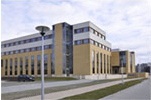15. Homological methods in rigorous numerics of dynamical systems
|
Polish supervisor:
|
Marian Mrozek
|
|
Cooperating partners:
|
Konstantin Mischaikow (Rutgers University)
Warwick Tucker (Uppsala University)
|
The goal of this project is to develop new efficient algorithms
for computing homological invariants of dynamical systems. Such
topological invariants as the Conley index, fixed point index,
connection matrices proved to be very helpful in rigorous
numerical analysis of the asymptotic behaviour of dynamical
systems. In particular, the first proof of the existence of chaos
in the Lorenz equations presented in 1995 by Mischaikow and Mrozek
was based on such methods. Since then numerous other problems in
dynamics were settled by such or similar methods.
The direct computation of homological invariants is particularly
important in the automated analysis of the asymptotic behaviour of
a dynamical system under various values of a multidimensional
parameter. Of course the extend of the applicability of such a
method crucially depends on the efficiency of the applied
algorithms. This causes a lasting demand for fast algorithms
computing homological invariants of dynamical systems. The
particularly challenging situation is the case of dynamical
systems given by the Poincare map of a differential equation with
stron expansion of error bounds. Recent work by Mrozek and
Srzednicki shows that at least in some situations the very
expensive rigorous integration of the differential equation for a
long time may be avoided by studying the topology of the exit set
of an isolating segment.
The student is expected to work on
-
the theory - finding a method to express the Conley index
and/or the fixed point index of the Poincare map in terms of
some computable information on the topology of the exit set of a
respective isolating segment
-
the algorithms for extracting the necessary information on
topology
which should result in an efficient method for computing some
homological invariants of dynamical systems defined by the
Poincare map.
|




|
|



